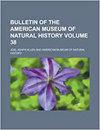Anura的手和脚肌肉:主要分支的结构、同源性、术语和同源性
IF 3.4
2区 环境科学与生态学
Q1 BIODIVERSITY CONSERVATION
Bulletin of the American Museum of Natural History
Pub Date : 2020-11-06
DOI:10.1206/0003-0090.443.1.1
引用次数: 8
摘要
尽管对无尾动物手足肌肉组织的研究始于19世纪上半叶,但迄今为止所有研究的范围都受到分类学或解剖学的限制,而且没有一个研究将无尾动物自掌肌学的多样性作为一个整体加以考虑。作为未来比较的模型,我们详细描述了一种树栖物种(水螅Triprion petasatus)的手和脚肌肉组织,定义了这些肌肉排列的层,并赋予了假定的功能。在我们对目前已知的54科和主要分支中的46科155种的肌肉学分析的基础上,我们描述了20个与手和脚肌肉有关的特征。在最新的无尾动物系统发育假说上对这些特征进行优化,得到了几个主要分支(弹蝇科、Alytidae、Xenoanura + Acosmanura、Xenoanura、Pipidae、Acosmanura、Anomocoela、Scaphiopodidae、Pelodytidae + Pelobatidae + Megophryidae、Megophryidae、Neobatrachia、heleophridae、Sooglossidae、Laurentobatrachia、Calyptocephalellidae、Myobatrachoidea和Nobleobatrachia)的synapomorphies,包括新的、进化枝的非同质突触形态以前仅由分子证据和一些相互冲突的表型特征(例如,Acosmanura, Anomocoela, Neobatrachia)支持。此外,我们(1)解决了关于尾尾肌和尾尾肌同源性的争议,在假定的尾尾肌+ Leiopelmatidae及其姐妹分支Lalagobatrachia的突触形态的背景下;(2)评估最近提出的关于anuran手足肌肉组织的术语;(3)讨论了几个有问题的同系性的手足肌肉的身份;(4)为anuran手足肌肉建立统一的术语,包括文献中使用的所有名称的同义词列表;(5)对几种新形态(新形态)的起源提出假说。本文章由计算机程序翻译,如有差异,请以英文原文为准。
Hand and Foot Musculature of Anura: Structure, Homology, Terminology, and Synapomorphies for Major Clades
ABSTRACT Although studies of anuran hand and foot musculature began in the first half of the 19th century, all studies to date have been taxonomically or anatomically restricted in scope, and none has considered the diversity of autopodial myology in Anura as a whole. As a model for future comparisons, we thoroughly describe the hand and foot musculature of an arboreal species (the hylid Triprion petasatus), define the layers in which these muscles are arranged, and attribute presumed functions. On the basis of our myological analysis of 155 species representing 46 of the 54 currently recognized families and main clades of anurans, we describe 20 characters related to hand and foot muscles. Optimization of these characters on the most recent and inclusive phylogenetic hypothesis of Anura results in synapomorphies for several major clades (Bombinatoridae, Alytidae, Xenoanura + Acosmanura, Xenoanura, Pipidae, Acosmanura, Anomocoela, Scaphiopodidae, Pelodytidae + Pelobatidae + Megophryidae, Megophryidae, Neobatrachia, Heleophrynidae, Sooglossidae, Laurentobatrachia, Calyptocephalellidae, Myobatrachoidea, and Nobleobatrachia), including new, nonhomoplastic synapomorphies for clades previously supported only by molecular evidence and a few conflicting phenotypic characters (e.g., Acosmanura, Anomocoela, Neobatrachia). Additionally, we (1) address controversies regarding the homology of anuran and caudate muscles in the context of putative synapomorphies for Ascaphidae + Leiopelmatidae and its sister clade Lalagobatrachia; (2) evaluate a recently proposed terminology for anuran hand and foot musculature; (3) discuss the identities of several hand and foot muscles with problematic homologies; (4) establish a unified terminology for anuran hand and foot muscles, including a list of synonyms for all names employed in the literature; and (5) propose hypotheses for the origin of several myological novelties (neomorphs).
求助全文
通过发布文献求助,成功后即可免费获取论文全文。
去求助
来源期刊
CiteScore
7.90
自引率
2.90%
发文量
4
审稿时长
>18 weeks
期刊介绍:
The Bulletin, published continuously since 1881, consists of longer monographic volumes in the field of natural sciences relating to zoology, paleontology, and geology. Current numbers are published at irregular intervals. The Bulletin was originally a place to publish short papers, while longer works appeared in the Memoirs. However, in the 1920s, the Memoirs ceased and the Bulletin series began publishing longer papers. A new series, the Novitates, published short papers describing new forms.

 求助内容:
求助内容: 应助结果提醒方式:
应助结果提醒方式:


